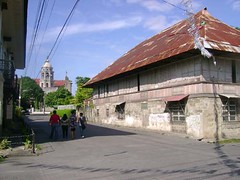 [/caption]
[/caption]Another old town with its historic remnants slowly vanishing is Sta. Rosa, a once agricultural settlement named by its Dominican originators after the blessed lady saint from Lima. The fairly new city is now known for its classy villages and big malls. From Binan, one could hardly notice the old houses that rest scattered in its major roads leading to the town center.
The church has been frequently repaired and renovated due to damage cause by both nature and man, but the core structure remains, the interior retained its aged personality. The spacious top space, its remarkable center dome, the magnificent retablo and the ornamented walls painted with holy imagery is comparable to that of San Agustin in Intramuros. A new bellfry, the old one, a pointed structure that had been in steady repair for decades, was finally replaced by a concrete construction using modern day materials. The bells were still the originals, the latest belfry is towering and impressive, it came out well. There were several markers commemorating the visits of the Peruvian Ambassadors, who had been offered monetary support to the town. The Peruvian government has donated a life-size image of Sta. Rosa de Lima.
Inside the church, there were still quite a few headstones that adorned the side walls, belonging to the important citizens of the old town. Most of these pioneering men and women had been given the honor of being buried within their beloved Iglesia, as proof of their significant contributions to their community. Within the environs of the church, which has always been the core of a Spanish town's blueprint, are the propertied and cultured families with their splendid residences.
[caption id="" align="alignnone" width="257" caption="Sta Rosa de Lima"]
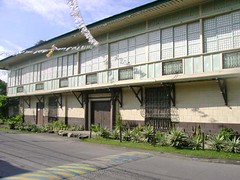 Casa de Tantionco
Casa de Tantionco 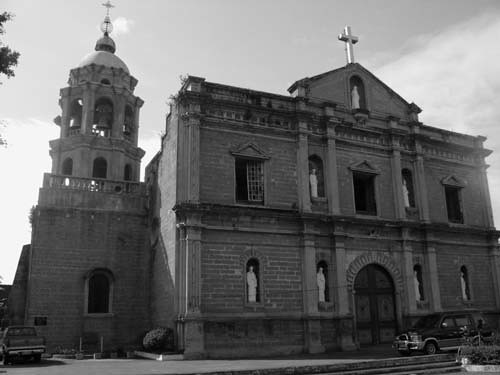 [/caption]Inside the Perla residence I was immediately greeted by a weathered statuette of a little girl holding a basket, said to be that of an aborigine, gathering fruits in the forest. These beautiful statuettes once adorned the attractive gardens of each home, they were elegant pieces and was said to have been a symbol of wealth and influence.
[/caption]Inside the Perla residence I was immediately greeted by a weathered statuette of a little girl holding a basket, said to be that of an aborigine, gathering fruits in the forest. These beautiful statuettes once adorned the attractive gardens of each home, they were elegant pieces and was said to have been a symbol of wealth and influence. [/caption]
[/caption]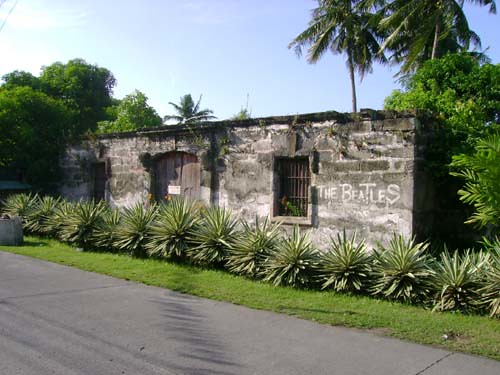 [/caption]
[/caption]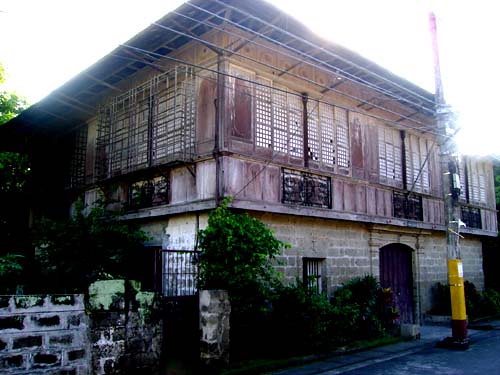 [/caption]
[/caption]



Kapatid, binasa ko ang mangilanngilan na mga sinulat mo dito sa iyong blog, at hindi ko maalis na mapuna ang iyong pagiging maka-banyaga, lalo na ang mga naisulat mo patungkol sa mga naiwang likha nga mga Kastila.
ReplyDeleteWala naman marahil na masama na sila'y pagaralan, pero hindi ba nararapat na ibigin natin ang tunay na atin? ang mga bagay na nilikha ng ating mga ninuno at hindi ng kung sinumang banyaga, nararapat lamang na ang pagiisip natin ay umayon sa tunay nating pagkatao, ang paglaya natin ay makakamit lamang kung tayo'y tuluyan ng lalaya sa gapos ng mentalidad na kolonyal.
hi John - I think your missing the point, I'm not obsessed nor do I have preference for Contemporary Spanish culture - they're as alien to me as your brand of Tagalog. However, our Hispano Filipino origins is something I believe in because regardless of our desires to rid ourselves of the transformation we underwent, it can not be undone, there's no returning back to our pristine state, not unless your willing to join the prehispanic natives, some are still in the mountains by the way, so you could certainly reestablish that bond - but I'm certain that you would find them strange because they represent what you were before you ever became Filipino.
ReplyDelete[...] The Old Town of Santa Rosa « With one’s past… [...]
ReplyDeletePatas lamang marahil na bigyan din ng importansya ang mas nauna nating cultura nold. Ang problema natin ngayon ay ang maganda sa atin paningin ay ang hindi atin.
ReplyDeleteMasaganang bagong taon!
Thanks John. I agree, we wouldn't want to entirely expunge the memory of our indigineous ancestors. There’s much that we could learn from the way they lived their lives.
ReplyDeleteMy two cents.
ReplyDeleteThere's too much misplaced nationalism in John's answer. Anyway, so what are we to do with our Caucasian heritage? We sure can't just trash our 400 years under Spanish rule and 50 years of American occupation which have been ingrained in our memory. If I recognize my Caucasian-colonial heritage, does that make me a lesser Filipino?
this is a nice post on sta rosa's losing heritage...i intend to visit the old town center one of these days probably after san pedro in a few weeks
ReplyDeleteD - You’re right, people like John are victims of historical instructions based on fanatical nationalism, they were educated that a true Filipino must rid himself with all things colonial. We had this educational method for so long that it has shaped a generation estranged by its own past, recollection of Spanish literature and culture in our islands is being unFilipino when in fact it was being Filipino. The amusing part is that we proclaim landmark Baroque Churches’, the Intramuros, the Hispanized “lutong bahay”,our appearance, our names, the Christian faith, the Fiesta etc etc as Filipino, you see in the end we'll all comeback to where we began.
ReplyDeleteTutubi - Thanks for dropping by, if you visit the San Pedro locale go to the poblacion where the church is, you’ll a discover a Cross that has been with the town for centuries, its miraculous powers was once renowned, even Rizal cited it in his Noli, I don’t know why it is not being promoted by the local government and the Church. Then you should visit the Sampaguita plantations, it made the town prosperous in the late 1800’s up to the American years, sadly, the trade was neglected, much of the Sampaguita being prepared here as garlands is from neighbouring Cavite.